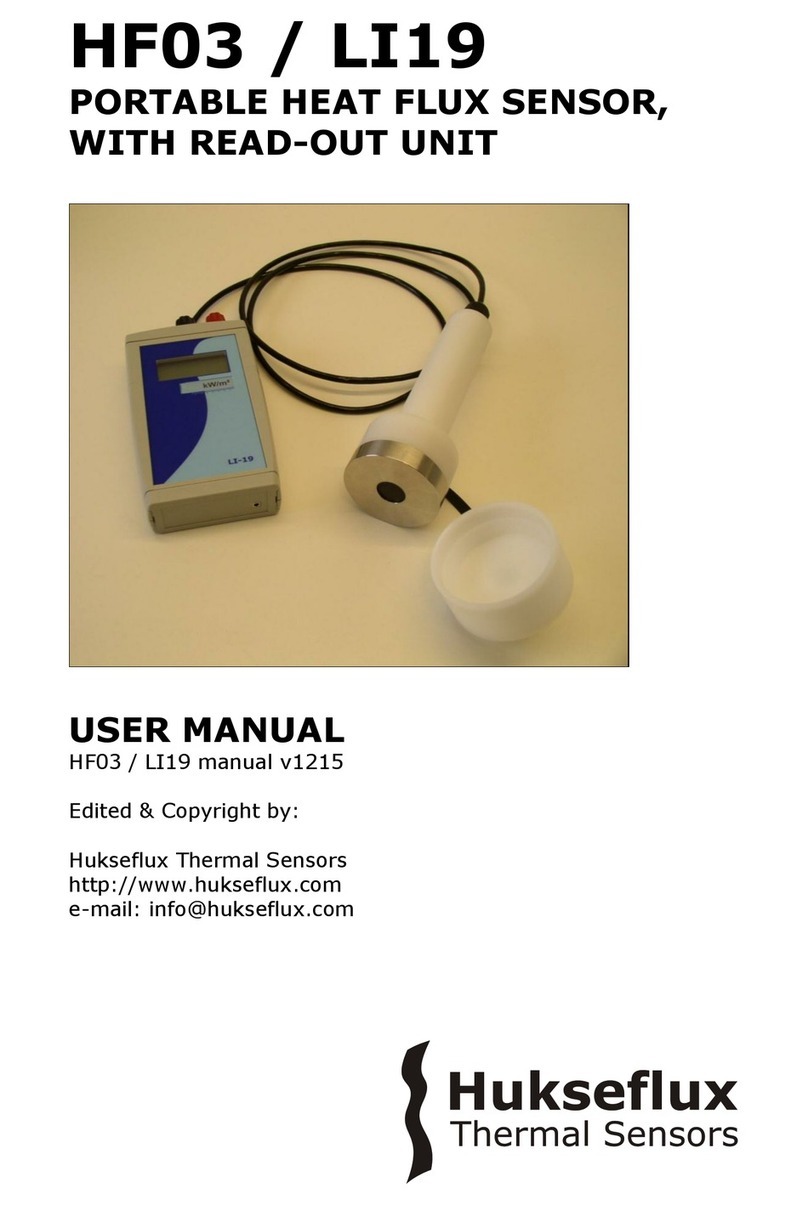HFP01SC manual v1624 5/39
Introduction
HFP01SC self-calibrating heat flux sensorTM is a heat flux sensor for use in the soil. It
measures soil heat flux in W/m2and offers the best available accuracy and quality
assurance of the measurement. The on-line self-test verifies the stable performance and
good thermal contact of sensors that are buried and cannot be visually inspected and
taken to the laboratory for recalibration. The self-test also includes self-calibration which
corrects for measurement errors caused by the thermal conductivity of the surrounding
soil (which varies with soil moisture content), for sensor non-stability and for
temperature dependence.
The total thermal resistance is kept small by using a ceramics-plastic composite body.
Equipped with heavy duty cabling, protective covers at both sides and potted so that
moisture does not penetrate the sensor, HFP01SC has proven to be very robust and
stable. It survives long-term installation in soils.
In essence, HFP01SC is a combination of a heat flux sensor and a film heater. The heat
flux sensor output is a voltage signal that is proportional heat flux through the sensor. At
a regular interval the film heater is activated to perform a self-test. The self-test results
in a verification of sensor contact to the soil and in a new sensitivity that is valid for the
circumstances at that moment. The latter is called self-calibration. Implicitly also cable
connection, data acquisition and data processing are tested. The result is a much
improved accuracy & quality assurance of the measurement relative to measurements
with conventional sensors such as model HFP01. Soil heat flux sensors are preferably left
in the soil for as long as possible, so that the soil properties become representative of the
local conditions. Using self-testing, the user no longer needs to take sensors to the
laboratory to verify their stable performance.
The sensor in HFP01SC is a thermopile. This thermopile measures the temperature
difference across the ceramics-plastic composite body of HFP01SC. A thermopile is a
passive sensor; it does not require power. HFP01SC can be connected directly to
commonly used data logging systems. The heat flux, Φ, in W/m2, is calculated by
dividing the HFP01SC output, a small voltage U, by the sensitivity Sreference.
The measurement function for HFP01SC is:
Φ = U/Sreference (Formula 0.1)
The factory-determined sensitivity Sreference , as obtained under calibration reference
conditions, is provided with HFP01SC on its product certificate.
HFP01SC calibration is traceable to international standards. The factory calibration
method follows the recommended practice of ASTM C1130. The recommended calibration
interval of common heat flux sensors is 2 years. With HFP01SC, using the self-test, this
may be extended to 5 years.





























